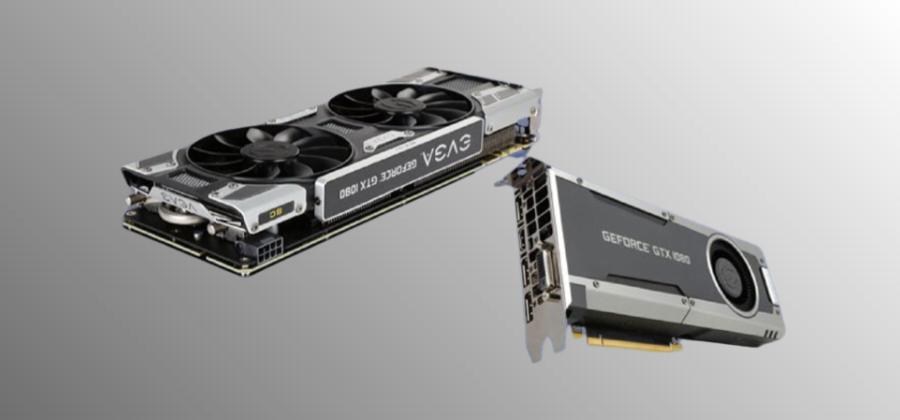Identifying the power supply in a system is crucial for various reasons; whether upgrading components, troubleshooting issues, or ensuring compatibility, accurate knowledge about your power supply specifications is essential. The power supply unit (PSU) is responsible for providing electrical power to the components within your device, and understanding its capabilities is critical for maintaining optimal performance and preventing potential damage.
Knowing the power supply specifications allows you to determine the amount of power your system can handle, ensuring that it can support the demands of your hardware. This knowledge is especially vital for gaming computers, high-performance workstations, or devices that require significant power, as using an insufficient power supply can lead to system instability, crashes, or even permanent damage.
This guide will outline the steps on how to find out what power supply I have. Examining the physical components, researching online, or utilizing software tools will help you uncover the necessary information about your power supply unit. By understanding your power supply’s wattage, voltage, amperage ratings, and other relevant details, you’ll be better equipped to make informed decisions regarding your system’s power requirements.
Gathering Information
Before diving into the specifics of your power supply, gathering any available information related to your device is essential. Here are the steps to help you pick the necessary information:
- Determine the device you’re working with, such as a computer, gaming console, router, or other electronic equipment.
- Refer to the user manual or any accompanying documentation with your device. Look for a section that provides information about the power supply or specifications.
- If you have a physical or digital copy of the user manual, search for keywords like “power supply”, “PSU” or “electrical specifications.”
- Please proceed to the next step to physically inspect the device and its power supply.
Note: Always follow safety guidelines and precautions when working with electronic devices and their internal components. Consider seeking professional assistance if you need clarification or are uncomfortable with physical inspections.
Physical Inspection
A physical inspection can help you identify the power supply unit (PSU) and gather information from its label or sticker. Follow these steps:
- Ensure the device is entirely powered off and disconnected from any power source.
- If your device allows the user access to its internal components, such as a desktop computer or gaming console, carefully open the casing.
- Note: Some devices may have warranties that become void if the casing is opened, so refer to the device’s warranty terms before proceeding.
- Look for the power supply unit, typically a rectangular box-shaped component with multiple cables connected to various device parts.
- Examine the surface of the power supply unit for a label or sticker provided by the manufacturer.
- You should find the manufacturer’s label information, such as the model, serial, or part numbers.
- Look for power supply specifications, including:
- Wattage: The maximum power capacity of the PSU (e.g. 500W, 750W).
- Voltage: The power supply requires input voltage (e.g. 110V, 220V).
- Amperage ratings: Check for amperage ratings on different power rails, such as +3.3V, +5V, and +12V.
- Other relevant information: Efficiency rating, certifications, or any additional details on the label.
You can gather valuable information about its specifications by inspecting the physical components and identifying the power supply unit. This information will serve as a foundation for further research and determining the capabilities of your power supply.
Online Research
Suppose you need help finding the necessary power supply information through the user manual or physical inspection. In that case, conducting online research can be valuable in uncovering the details you need. Here are some steps to guide you through the online research process:
First, utilize the information gathered from the PSU label or sticker to conduct an online search. Enter the manufacturer’s name, model number, serial number, or other identifying details into a search engine. This will help you find relevant search results related to your power supply.
Next, visit the official website of the PSU manufacturer. Manufacturers often provide comprehensive information about their products on their websites. Look for sections such as product specifications, documentation, or support areas specifically dedicated to the power supply models.
Navigate to the specific PSU model or series you have identified and explore the available resources. Look for downloadable manuals, datasheets, or product specifications provided by the manufacturer. These documents often contain detailed information about the power supply’s specifications, capabilities, and compatibility requirements.
Take the time to review the specifications and technical details provided by the manufacturer. Pay close attention to important information such as the wattage, voltage, amperage ratings, and any additional details mentioned. This information will clearly understand your power supply’s capabilities and limitations, enabling you to make informed decisions.
If you need help finding the required information through the manufacturer’s website, consider exploring online forums or communities dedicated to your device or power supplies. These platforms often have discussions and threads where users share their experiences and knowledge. Engaging in these discussions and seeking advice from other users or experts may provide valuable insights or direct you to alternative resources.
Remember to cross-reference information from multiple sources to ensure accuracy and reliability. It’s also important to remember that power supply models vary, so focus on finding information specific to your exact model or series. By conducting thorough online research, you can gather comprehensive information about your power supply and its specifications, helping you make informed decisions and ensuring compatibility with your system.
Software Tools (if applicable)
In addition to physical inspection and online research, software tools can help you gather information about your power supply. These tools can provide real-time monitoring and reporting of various hardware components, including the power supply. Here are some software tools you can consider using:
Hardware Monitoring Utilities
- Many hardware monitoring utilities offer features to monitor and display information about your system’s components, including the power supply.
- Tools like HWMonitor, CPU-Z, or HWiNFO provide detailed information about voltages, temperatures, fan speeds, and power consumption.
- These utilities can display real-time power supply statistics, such as voltage readings on rails and power drawers.
Manufacturer-Specific Software
- Some power supply manufacturers provide software tools to monitor and manage their power supplies.
- Check the manufacturer’s website for any specific software they offer for monitoring their power supply units.
- These tools may provide additional features like customizable fan curves, power efficiency monitoring, or firmware updates.
Power Supply Testing Software
- Software applications are available that specialize in stress testing and benchmarking the power supply.
- Tools like OCCT (OverClock Checking Tool) or FurMark can stress the power supply to measure stability and identify potential issues.
- These tools can help assess the performance of your power supply under heavy loads and detect any abnormalities.
When using software tools to gather power supply information, ensuring compatibility with your system and following the software instructions carefully is essential. Not all power supplies may be compatible with monitoring software, particularly older or specialized models. Some software tools may require administrative privileges or advanced technical knowledge to operate effectively.
Using software tools alongside physical inspection and online research can provide a comprehensive understanding of your power supply’s specifications and performance. These tools can offer real-time monitoring, diagnostics, and stress testing capabilities, allowing you to assess the health and stability of your power supply.
Contact Manufacturer or Technical Support (if needed)
If you have exhausted all other avenues and still need to gather the necessary information about your power supply, contacting the manufacturer or their technical support can be helpful. Here’s how you can proceed:
Locate the manufacturer’s contact information
- Visit the official website of the power supply manufacturer or refer to any documentation you have to find their contact details.
- Look for a support or contact page with email addresses, phone numbers, or a dedicated support form.
Prepare relevant information
- Before contacting the manufacturer or technical support, gather all the relevant information about your power supply.
- Note the model number, serial number, and any other identifying details you have from the power supply label or sticker.
- Prepare a clear description of the information you seek, such as wattage, voltage, or specific specifications you need assistance with.
Reach out to the manufacturer or technical support
- Send an email, fill out a support form, or call the manufacturer’s designated contact channels.
- Provide a concise and detailed explanation of your query, including the specific information you seek.
- Include the relevant details about your power supply, such as the model and serial numbers, to help them assist you more effectively.
Follow their instructions and guidance.
- The manufacturer or technical support team will guide you on the following steps to obtain the desired information.
- They may request additional details or provide specific instructions to help address your query.
- Be responsive to their inquiries and follow their guidance closely to ensure a smooth and efficient resolution.
Be patient and polite.
- Remember that response times from manufacturers or technical support may vary based on their workload and support resources.
- Be patient while waiting for a response, and avoid sending multiple requests for the same inquiry.
- Maintaining a polite and respectful tone can contribute to a positive and helpful interaction.
Contacting the manufacturer or technical support directly can be advantageous, as they have in-depth knowledge of their products and can provide accurate and specific information about your power supply. Their expertise can help address any concerns, clarify specifications, or offer guidance on compatibility with your system.
Conclusion
Determining the specifications of your power supply is crucial for various reasons, such as upgrading your system, ensuring compatibility with new components, or troubleshooting potential issues. Following the outlined steps, you can effectively gather the necessary information about your power supply.
Begin with a thorough physical inspection of your device, locating the power supply unit and examining any labels or stickers for specifications. Conduct online research by visiting the manufacturer’s website, exploring product documentation, and utilizing online forums for additional insights. Software tools can also provide real-time monitoring and stress testing capabilities, offering further information about your power supply’s performance.
When the information is unavailable, contacting the manufacturer or technical support can provide accurate details and guidance. They possess expert knowledge about their products and can assist in resolving any uncertainties or inquiries you may have.
Remember to exercise patience and ensure you are polite when seeking assistance. Effective communication with the manufacturer or technical support can significantly enhance your chances of obtaining the required information.
Combining these methods will give you a comprehensive understanding of your power supply’s specifications, enabling you to make informed decisions regarding your system’s power requirements.
Frequently Asked Questions
Can I determine the power supply specifications using my computer’s BIOS settings?
Generally, BIOS settings do not provide detailed information about the power supply specifications. BIOS settings primarily focus on system configuration and hardware settings rather than specific power supply details. Referring to the physical inspection, user manual, online research, or contacting the manufacturer for accurate power supply specifications is recommended.
Can I use software tools to determine the power supply’s wattage or voltage ratings?
Software tools can provide real-time monitoring and reporting of various hardware components, including the power supply. However, determining the power supply’s wattage or voltage ratings solely through software tools may need to be more reliable and accurate. These tools can display information such as voltage readings and power draw, but the detailed specifications are best obtained through physical inspection, user manual, or manufacturer-provided documentation.
What should I do if I need help finding the information about my power supply even after following the outlined steps?
If you have exhausted all available resources and cannot find the necessary information about your power supply, contact the manufacturer or their technical support. They have access to detailed product information and can assist you in obtaining the specific specifications you need. Please provide them with relevant details such as the model number, serial number, and a clear description of the information you seek to enhance the chances of a successful resolution.










